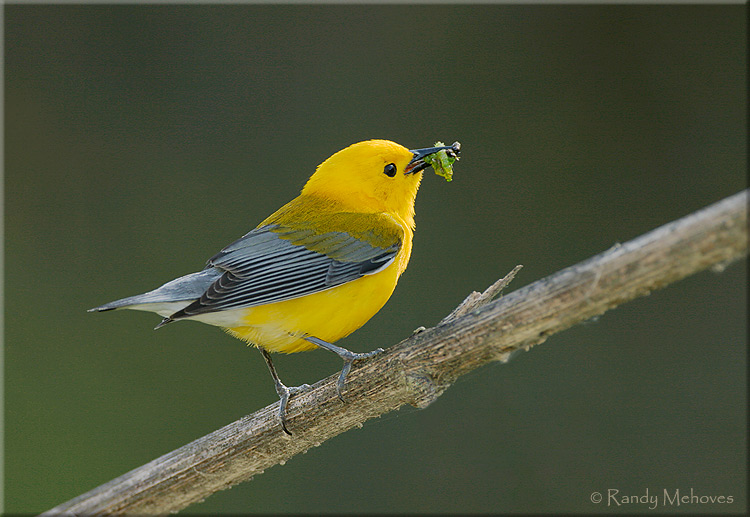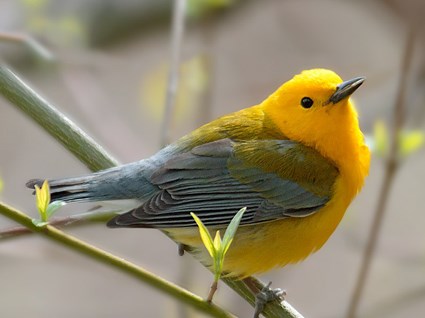
Protonotaria citrea
SUBFAMILY
Parulinae
TAXONOMY
Protonotaria citrea Boddaert, 1783, Louisiana.
OTHER COMMON NAMES
French: Paruline protonotaire; German: Orangefleck-Waldsдnger;
Spanish: Reinita Cabecidorada.
PHYSICAL CHARACTERISTICS
5–5.5 in (12.7—14 cm). Long, thin bill, bright golden yellow
and gray plumage, and a fairly short tail. Its name comes from
a resemblance of its plumage to the garb of court clerks,
known as prothonotaries. The female is similar but less
brightly colored.
DISTRIBUTION
Breed from Florida west to Texas and north to Minnesota,
southern Ontario and Pennsylvania. Winters in pristine rainforest
habitats from southern Mexico to Venezuela.
HABITAT
Wooded swamps.
BEHAVIOR
Song is a repeated series of “tweets.” Often seen poking into
the saturated logs of the swamps, where it resides.
FEEDING ECOLOGY AND DIET
Mainly insects.
REPRODUCTIVE BIOLOGY
Unusual for warblers, it builds its mainly moss nests in tree
holes such as old woodpecker holes, or in nest boxes. Average
clutch size is three to eight, with speckled light pink eggs that
hatch in about two weeks.
CONSERVATION STATUS
Not threatened.
SIGNIFICANCE TO HUMANS
None known.
Photo Gallery of - Prothonotary warbler




 Animalia Life
Animalia Life